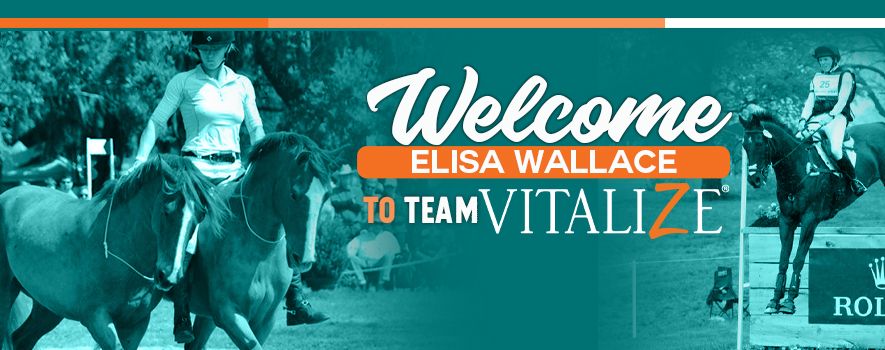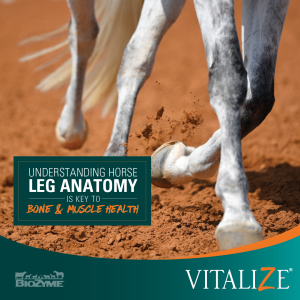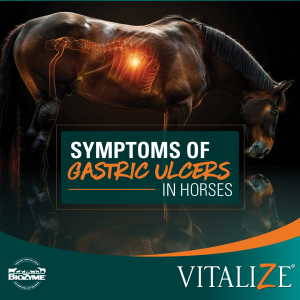
It takes a special person to work with a species that doesn’t speak the same language as you do. However, for equestrian enthusiasts, the language barrier becomes less of a challenge over time, as both the person and the horse speak with their souls.
Elisa Wallace is one such person. As an accomplished equine athlete, trainer and advocate of the underdogs, Wallace said the traits that make a trainer great are perhaps similar to being a great elementary teacher or parent–be patient and listen.
“I’m not a parent, but I have 24 horses that are very similar to taking care of a room of toddlers,” she laughed as she describes the bickering and the various personalities.
Be Patient
“Patience is a big one. Have a lot of emotional control as well. Get connected, and don’t let outward things effect you. You can’t let those things transfer to the horse,” she said.
She reminds herself and other riders that a horse can sense if its rider had a bad day at school or work, and therefore needs to set all things aside when he or she gets to ride, train or compete. She encourages others to be in the moment. She said one of her passion projects has helped her learn this lesson.
Wallace is an advocate for and “collector” of American Mustangs. Known for their spirit, it was always on her bucket list to train a mustang. That opportunity presented itself when her two high-level eventing horses were out with injuries 10 years ago.
“A friend of mine, Rebecca Bowman, had been training mustangs, and there was a competition in South Carolina that she signed me up for. I had no intentions to keep a mustang. What am I going to do with it? Then when I picked up Fledge, my first one, I had a really significant connection to him, and about 30 days in, I knew I was not going to be able to part with this 13-hand mustang,” she recalls. “He’s probably one of the smartest horses I have ever trained. We ended up winning the makeover, and he’s just been a priceless horse to have. He’s helped me train other horses and is great with children.”
That was just the start of Wallace’s mustang adoption advocacy efforts. Today she has five mustangs, and said she tries to train at least one a year to rehome. Although most people think of mustangs falling into western disciplines, she has two that she events on, Eton and Wyeth
“When you train a mustang, you can never have just one. They are an addition, just like potato chips,” Wallace said. “Mustangs fall in line with thoroughbreds, stereotyped as an underdog and not for what they really are. I always go for the runt or the underdogs. Thoroughbreds and mustangs have always been part of my heart.”
From a business aspect, Wallace said training mustangs has helped her distinguish herself and build her reputation. She isn’t just another eventer who trains, but she is the is the eventer who trains wild mustangs. And training mustangs for the Mustang Makeover is no easy feat. Unlike some equine makeovers that offer trainers 10-12 months to work with their horses, a trainer has 120 days to take a wild mustang and train it. According to Wallace that isn’t enough time for some, yet some she can compete on after just two weeks of working on them.
“Every horse is an individual. Fledge and Rune–a lot of the things they know, they learned in 120 days. They are really intelligent horses. Mustangs are the best teachers and are always trying to be better. But mustangs can humble you, too,” she said.
Listen
“To be a good horse trainer, you have to be willing to listen to the horse. Often times we get a lot of knowledge, and we can’t lean back on that. Be open minded to new ways and different tools,” Wallace said.
Wallace has mastered the art of listening to horses, having had a passion for them her entire life. She started riding at just two and competed in her first event when she was four. As a three-day eventer, she must listen to her competition horses, to make sure they are feeling their best, and as a trainer who works with multiple horses across the disciplines, she also listens to horses that each communicate differently.
With so many horses, keeping them feeling their best is top of Wallace’s mind. She knows that gut and joint health are keys to their overall health and performance. With ulcers as a main culprit to horse performance, it is imperative to be proactive in preventing them.
“In the horse world, ulcers and joint health are big things. I came across Vitalize® products and Hyaluronex® Joint doing my own research and listening to my horses. I liked the data and the response my horses had to the products,” Wallace said.
The stressors that both her competition level horses and mustangs face–changes in routines, trailering, weather, and shipping and going into holding pens for the mustangs–are all triggers for ulcers. However, the Vitalize products offer horses a #goodgutfeeling. Vitalize ® Alimend® is a natural product that combines a unique blend of MHB3® Hyaluronan, H. erinaceous (Lion’s mane) extract, and Amaferm®, is a prebiotic designed to enhance digestibility by amplifying the nutrient supply for maximum performance. It is research-proven to increase intake, digestion and absorption. Vitalize ® Equine Gel is a quick response gel that includes Amaferm, MOS to trap and expel pathogens, valuable nutrients needed during stress and antioxidants to protect and boost immunity. Finally, Hyaluronex Joint provides a completely hydrated, oral, liquid HA formulation, allowing for quick absorption and maximum efficacy to promote joint, bone, soft tissue, and cartilage health.
After using these products for six months, Wallace sees a difference and knows her horses are healthier and happier.
“I notice the little things like a horse having a harder time picking up a right lead, being grumpier or off grain. Ulcers are a big deal and make huge changes in horses, both behavioral wise and body wise. I’ve been giving Vitalize Alimend to some of the“difficult” horses. Alimend is preventing ulcers and keeping them comfortable. The same can be said for the Hyaluronex in my older horses and competition horses in preserving their joints. My horses do well on the products, and they like them,” she said.
“I also had an interesting experience with the Vitalize Equine Gel. We were on a 16-hour trip. One of dad’s horses was acting like it was tying up in the trailer. I like to use the Vitalize Gel after gallops. We popped her with the Gel and within 10 minutes she felt better and was safely able to make the trip. The proof is in the pudding right there! So, I always make sure we have some of that when I’m trailering,” Wallace said.
Wallace is proof that communication barriers are meant to be broken. This Vitalize Ambassador has a heart for underdogs–mustangs and thoroughbred–and knows the keys to her success as a trainer and a five-star three-day eventer are patience, listening and keeping her horses healthy.

